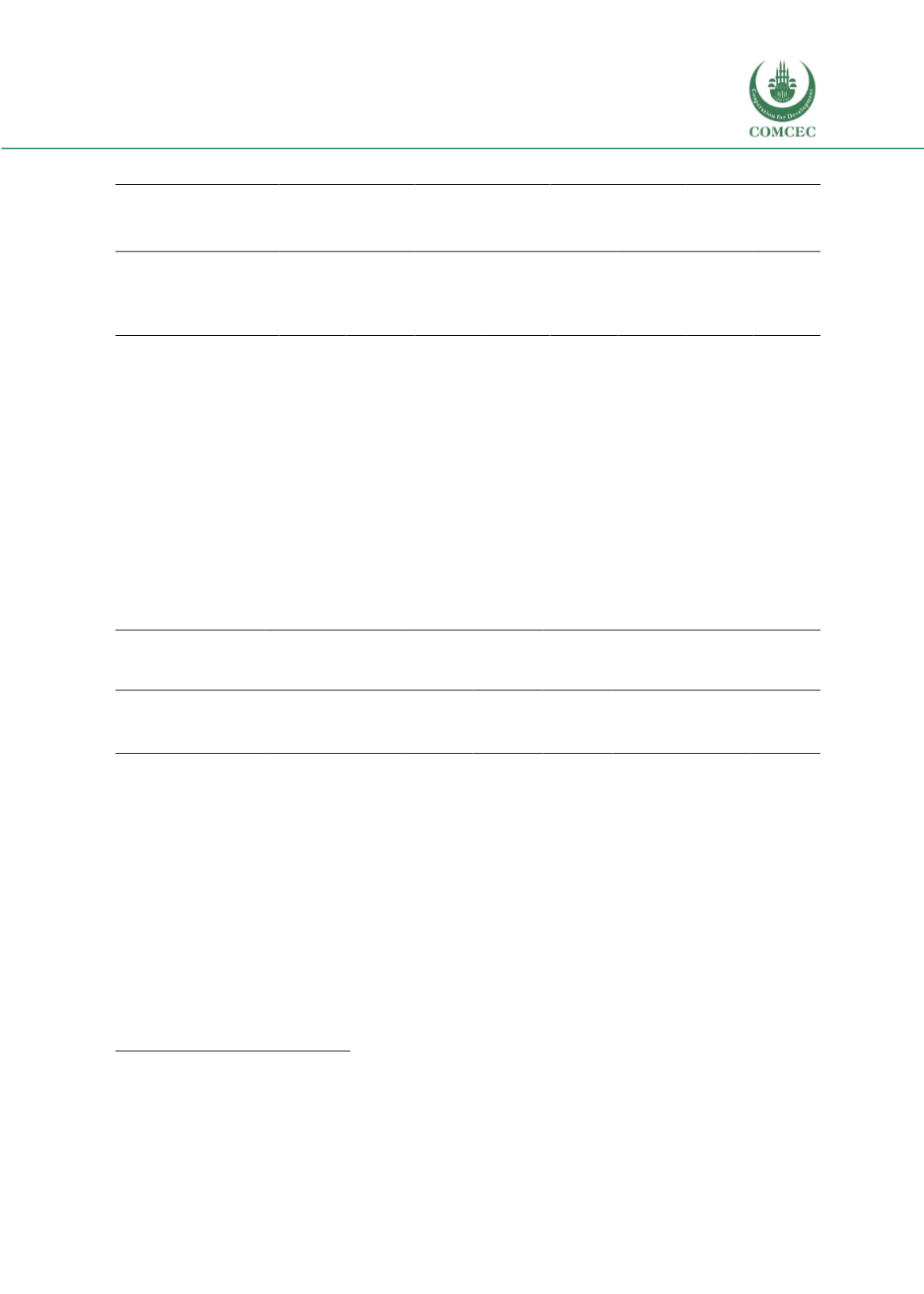

Education of Disadvantaged Children in OIC:
The Key to Escape from Poverty
163
Table 27 Education outcomes by gender of the child
Gender of the child
Attendance to
school
(6-11 year olds)
Attendance to
school
(12-15 year olds)
Finishing 5 years
of education
(12-15 year olds)
Finishing 8 years
of education
(16-18 year olds)
1990
2012
1990
2012
1990
2012
1990
2012
Female
45.6
70.3
39.8
57
31.9
51.8
22.7
41.2
Male
63.5
78.2
65.4
70
48.2
55.1
39
50.1
Gender parity index
0.72
0.90
0.61
0.81
0.66
0.94
0.58
0.82
Note: Authors’ calculations using DHS 1990 and DHS 2012
Language:
Generally speaking, Urdu is the medium of instruction in government schools, English
in elite private schools and English is ‘claimed’ to be the medium in non-elite private schools.
Access and completion rate are significantly higher for children in households where the language
spoken is Urdu versus other languages. In 2012, attendance rates to school by 6-11 year olds and
12-15 year olds are respectively 92% (Urdu) vs 72% (non-Urdu) and 83% (Urdu) vs 62% (non-
Urdu). The percentage point differences between Urdu vs Non-Urdu is highest for the completion
rate of 8 years of education. For the latter indicator, students who speak Urdu at home have higher
rates by a large 26 percentage points over the non-Urdu category.
Table 28 Education outcomes by language spoken in the household
Language spoken
in the household
Attendance to
school
(6-11 year olds)
Attendance to
school
(12-15 year olds)
Finishing 5 years
of education
(12-15 year olds)
Finishing 8 years
of education
(16-18 year olds)
1990
2012
1990
2012
1990
2012
1990
2012
Non-Urdu
53.5
72
52
61.5
37.5
50.4
27.7
41.1
Urdu
74.5
92.1
72.7
82.8
63.5
73.5
57
67.2
Note: Authors’ calculations using DHS 1990 and DHS 2012
Disability:
The DHS data does not report on disability. The Annual Status of Education Report
(ASER)
423
survey includes children suffering frommild to severe disabilities. In terms of access to
schooling, the ASER 2015 reports “that among children who were reported to have moderate to
severe difficulties in hearing, 30% of them have never been enrolled in schools. Of the children
who were reported as having moderate to severe difficulties in caring, 40% of them had never
been enrolled in school. Of the children reported with moderate to severe difficulties in walking,
26% have never been enrolled to school. Finally, 18% and 11% of children being reported with
moderate to severe difficulties in seeing and in understanding have never been enrolled in school,
respectively”
424
.
423
ASER - The Annual Status of Education Report is the largest citizen led; household based initiative that aims to provide reliable
estimates on the schooling status of children aged 3-16 years residing in all rural and few urban districts of Pakistan.
424
ASER (2015)
















